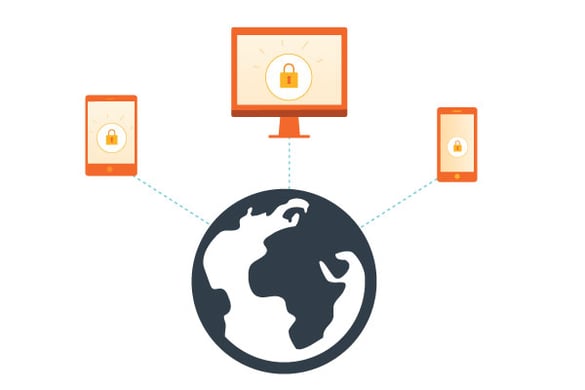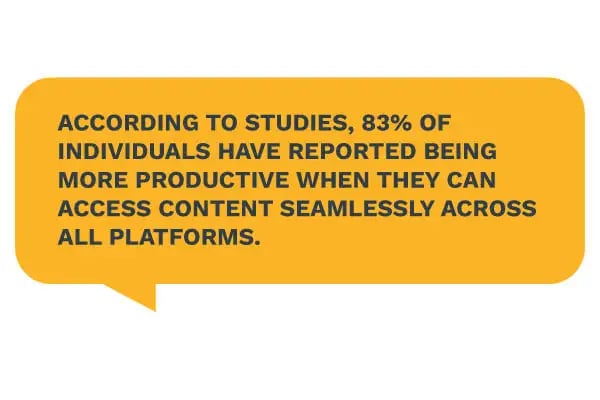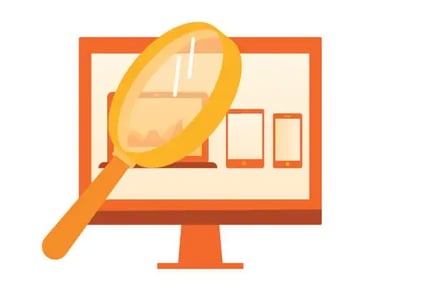As more companies adopt borderless business models, there is an increased need for comprehensive endpoint management solutions. Today, many companies allow their employees to work remotely, using distributed networks to connect their devices to company networks. With endpoint management, companies can provide, deploy, update, troubleshoot, and detect endpoint devices that access company networks. Endpoint devices are of particular concern to management and the IT departments of companies since they present network vulnerabilities. The most successful cybersecurity attacks usually start at the endpoint. Any company that permits the use of smartphones and other remote devices within its network needs to develop a thorough endpoint management implementation plan. In this article, we take a look at the crucial factors to consider when managing endpoint devices.

Remote devices enhance the efficiency and productivity of modern businesses. According to IBM, 82% of company employees agree to use smartphones to help with their remote work. Companies have also endorsed Bring Your Own Device (BYOD) and Corporate-Owned Mobile Devices to improve productivity within their networks. Through endpoint management, company IT experts can dictate the use of these devices, provide software installations & updates, detect and monitor all devices connected to the network from a single point. So, how do you choose to allocate funds and resources to match your company’s goals and objectives?. With that in mind, this article outlines how to implement a proper endpoint management policy in your organization.
Considerations When Implementing an Endpoint Management Policy
Security policies are a crucial part of protecting your network from vulnerabilities that occur at endpoints. With proper controls in place, your IT Security experts can identify and manage network access by remote devices -this gives them enough time to locate and mitigate any bad actors. To ensure proper controls, you should take into account the following factors when implementing your organization’s endpoint management solution.
Focus on Information and Network Security
Bring Your Own Device (BYOD) arrangements usually present a host of security issues. According to Microsoft, nearly 45% of corporate data is held on personal laptops, smartphones, and tablets. As more companies adopt the use of remote devices, company information is increasingly at risk. Besides exposing company data to possible seizure, these endpoint devices also serve as a conduit for a security breach that can affect the entire company network. When formulating an endpoint management policy, you should ensure that all endpoint devices satisfy certain requirements before being granted access to your company’s network and resources. Your endpoint management policy should include security solutions with a wide range of capabilities, including antivirus, analytics, device control, network traffic analysis, and endpoint detection & response.
Include Mobile Content Management Capabilities
You should ensure that all mobile devices used for organizational work are used according to laid down policies and guidelines. It is also important to optimize content for mobile access.
 As the mobile landscape changes, so too should your content and access management strategy. Most modern endpoint management solutions come with an Enterprise Mobility Management (EMM) system that helps your IT experts to oversee documents, applications, data, and user identity.
As the mobile landscape changes, so too should your content and access management strategy. Most modern endpoint management solutions come with an Enterprise Mobility Management (EMM) system that helps your IT experts to oversee documents, applications, data, and user identity.
Effective endpoint management allows mobile users to enroll without the intervention of IT staff. Your policy should also include Identity and Access Management (IAM) services, which help your IT staff to monitor and control mobile access to company resources securely. With a proper mobile device management solution, your IT staff can verify users and grant mobile access confidently. This way, you can improve your employees’ productivity and efficiency without compromising data & network security.
Separate Personal and Company Information
When implementing an endpoint management policy, there is a need to maintain employee privacy. The General Data Protection Regulation (GDPR), which came into effect in May 2018, affects the way organizations monitor and control corporate-owned business devices. The regulation postulates that personal data such as photos, contacts, and other non-corporate information should not be under the control of your company's endpoint management software.
To maintain company data security, your IT staff should create a container that isolates enterprise data within personal devices. Prevention of data loss, discouraging intellectual property theft, and enhancing business performance are all valid reasons for continuously monitoring mobile devices. You should, however, consider protecting personal data when implementing your endpoint management solution.
.jpg?width=600&name=1%20(1).jpg)
Your Solution Should Work on Multiple Platforms
The tool you choose to manage your endpoints should work well in different software environments, across various platforms. As endpoint devices continue to proliferate, so does the complexity of endpoint management. While devices in your company network may multiply, your IT staff won't. It would be best if you look for a management solution that has deep, native integration with all operating systems. This way, you and your IT team can enable standardized, policy-driven management of data, configurations, and applications on all endpoint devices.
Creating a consistent user experience improves employee productivity since they can focus on performing their tasks instead of how to access them. Comprehensive integration also allows you to migrate from legacy systems to newer ones easily.
Create a Seamless User Experience
One of your biggest goals when deploying an endpoint management tool is improving your employees’ productivity. Your tool should ensure the ease of access and functionality to the employees, who are the end-users. You should make sure that business applications, data, and services can be accessed predictably on all platforms.
Your chosen endpoint management solution should also enable your IT team to maintain a single set of identities for all users and devices supported by your company network. This way, you will be able to align your endpoint management policy with business requirements to deliver a cost-effective approach to managing an increasingly mobile workforce. Your chosen tool should enable a flexible, consistent, and secure user experience.
The Benefits of Proper Endpoint Management Implementation
We have seen that endpoint management tools help minimize IT costs, enforce compliance with regulations, and reduce the security risks associated with mobile devices. Here are a few of the benefits you stand to gain by implementing a proper endpoint management policy within your company:
1. Centralized Management

With a proper endpoint management tool in place, you can monitor various devices across different platforms. Unified Endpoint Management tools allow you to view every device that connects to your network and identify the applications from a single system. These tools come with comprehensive, interactive dashboards that visualize the movement of threats within the network in real-time. The use of a single software to manage all endpoints simplifies your IT team’s security management capabilities.
2. Improved IT Security
With a unified endpoint management system, your IT staff can quickly pinpoint security threats across all endpoints, analyze and mitigate the threat. With larger infrastructure and more points of entry for malware, the modern workplace presents a huge security challenge for your IT team. Endpoint management solutions enable your IT team to manage all these devices within one policy framework. According to the Center for Internet Security, proper endpoint management implementation reduces the risk of cyberattacks by about 85%.
3. Elevated Employee Morale and Productivity
If you are concerned with the productivity of your workers, as this directly affects business performance, endpoint management improves employee access to company data, applications, and network resources. It also allows them the flexibility to work using their preferred device depending on location. When you secure and properly manage your endpoints, employee productivity is no longer confined to the traditional office and desktop environment, as they can work on the go.
Categories: Security, Managed Services











